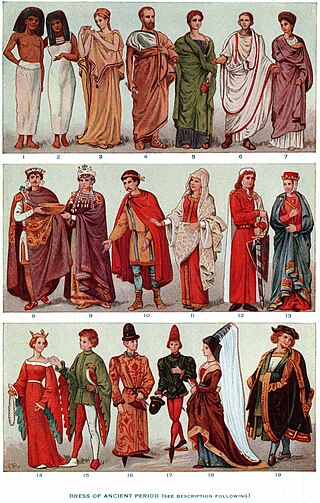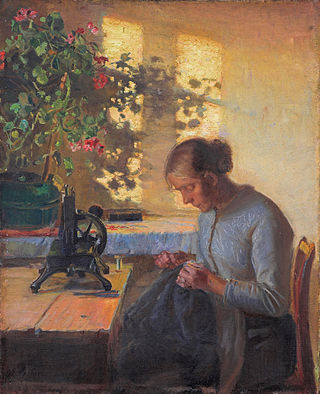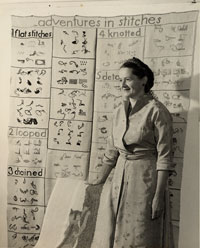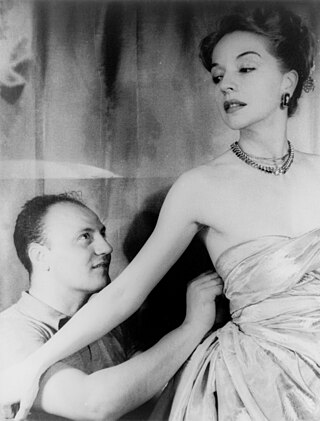
Clothing is any item worn on the body. Typically, clothing is made of fabrics or textiles, but over time it has included garments made from animal skin and other thin sheets of materials and natural products found in the environment, put together. The wearing of clothing is mostly restricted to human beings and is a feature of all human societies. The amount and type of clothing worn depends on gender, body type, social factors, and geographic considerations. Garments cover the body, footwear covers the feet, gloves cover the hands, while hats and headgear cover the head, and underwear covers the private parts.

Textile is an umbrella term that includes various fiber-based materials, including fibers, yarns, filaments, threads, different fabric types, etc. At first, the word "textiles" only referred to woven fabrics. However, weaving is not the only manufacturing method, and many other methods were later developed to form textile structures based on their intended use. Knitting and non-woven are other popular types of fabric manufacturing. In the contemporary world, textiles satisfy the material needs for versatile applications, from simple daily clothing to bulletproof jackets, spacesuits, and doctor's gowns.

Yarn is a long continuous length of interlocked fibres, used in sewing, crocheting, knitting, weaving, embroidery, ropemaking, and the production of textiles. Thread is a type of yarn intended for sewing by hand or machine. Modern manufactured sewing threads may be finished with wax or other lubricants to withstand the stresses involved in sewing. Embroidery threads are yarns specifically designed for needlework. Yarn can be made of a number of natural or synthetic materials, and comes in a variety of colors and thicknesses. Although yarn may be dyed different colours, most yarns are solid coloured with a uniform hue.
This timeline of clothing and textiles technology covers events relating to fiber and flexible woven material worn on the body. This includes the making, modification, usage, and knowledge of tools, machines, techniques, crafts, and manufacturing systems (technology).

Textile arts are arts and crafts that use plant, animal, or synthetic fibers to construct practical or decorative objects.

Sewing is the craft of fastening or attaching objects using stitches made with a sewing needle and thread. Sewing is one of the oldest of the textile arts, arising in the Paleolithic era. Before the invention of spinning yarn or weaving fabric, archaeologists believe Stone Age people across Europe and Asia sewed fur and leather clothing using bone, antler or ivory sewing-needles and "thread" made of various animal body parts including sinew, catgut, and veins.

Wearable art, also known as Artwear or "art to wear", refers to art pieces in the shape of clothing or jewellery pieces. These pieces are usually handmade, and are produced only once or as a very limited series. Pieces of clothing are often made with fibrous materials and traditional techniques such as crochet, knitting, quilting, but may also include plastic sheeting, metals, paper, and more. While the making of any article of clothing or other wearable object typically involves aesthetic considerations, the term wearable art implies that the work is intended to be accepted as an artistic creation or statement. Wearable art is meant to draw attention while it is being displayed, modeled or used in performances. Pieces may be sold and exhibited.

Fiber art refers to fine art whose material consists of natural or synthetic fiber and other components, such as fabric or yarn. It focuses on the materials and on the manual labor on the part of the artist as part of the works' significance, and prioritizes aesthetic value over utility.
The study of the history of clothing and textiles traces the development, use, and availability of clothing and textiles over human history. Clothing and textiles reflect the materials and technologies available in different civilizations at different times. The variety and distribution of clothing and textiles within a society reveal social customs and culture.

Mariska Karasz was an American fashion designer, author, and textile artist. She had a passion for fashion design and created colorful, patterned garments largely inspired by the folk art of her native country. Her abstract wall hangings mixing fibers such as silk, cotton, wool, and hemp with horsehair and wood garnered her extensive national, and even international, attention. Critics repeatedly praised her for her skillful and unusual use of color, her creative combinations of materials, and her inspiring efforts to promote a modern approach to embroidery.
Complete garment knitting is a next-generation form of fully fashioned knitting that adds the capability of making a 3-dimensional full garment. Unlike other fully fashioned knitting, where the shaped pieces must still be sewn together, finished complete knitted garments do not have seams. The knitting machines' computerized instructions direct movement of hundreds of needles to construct and connect several tubular knitted forms to create a complete garment in a single production step.
This is a list of existing articles related to fashion and clothing. For individual designers, see List of fashion designers

Sustainable fashion is a term describing efforts within the fashion industry to reduce its environmental impacts, protect workers producing garments, and uphold animal welfare. Sustainability in fashion encompasses a wide range of factors, including "cutting CO2 emissions, addressing overproduction, reducing pollution and waste, supporting biodiversity, and ensuring that garment workers are paid a fair wage and have safe working conditions".

Sew Fast Sew Easy was a corporation based in the Garment District in New York City, that is best known for sewing classes, sewing patterns and sewing books. It was founded in 1991 by Elissa K. Meyrich, a designer in New York City's garment district for over 26 years, an instructor at Parsons School of Design, and an author and contributing writer to sewing publications. Sew Fast Sew Easy classes were part of a resurgence in traditional home economics enabled by networked technologies including Internet chat groups and digitally-adjustable patterns. The company created NYC's first Stitch and Bitch group in 1997. The company started an Internet guestbook, the Stitch and Bitch Cafe, in 1998.

Haute couture is the creation of exclusive custom-fitted high-end fashion design. The term haute couture is French, "haute" meaning "high" or "elegant," and "couture" translating to "sewing" or "dressmaking." The term haute couture generally refers to a specific type of upper garment common in Europe during the 16th to the 18th century, or to the upper portion of a modern dress to distinguish it from the skirt and sleeves. Beginning in the mid-nineteenth century, Paris became the centre of a growing industry that focused on making outfits from high-quality, expensive, often unusual fabric and sewn with extreme attention to detail and finished by the most experienced and capable of sewers—often using time-consuming, hand-executed techniques. Couture translates literally from French as "dressmaking", sewing, or needlework and is also used as a common abbreviation of haute couture and can often refer to the same thing in spirit.
Sewing is the craft of fastening or attaching objects using stitches made with needle and thread. Sewing is one of the oldest of the textile arts, arising in the Paleolithic Era. Although usually associated with clothing and household linens, sewing is used in a variety of crafts and industries, including shoemaking, upholstery, sailmaking, bookbinding and the manufacturing of some kinds of sporting goods. Sewing is the fundamental process underlying a variety of textile arts and crafts, including embroidery, tapestry, quilting, appliqué and patchwork.
Clothing industry or garment industry summarizes the types of trade and industry along the production and value chain of clothing and garments, starting with the textile industry, embellishment using embroidery, via the fashion industry to apparel retailers up to trade with second-hand clothes and textile recycling. The producing sectors build upon a wealth of clothing technology some of which, like the loom, the cotton gin, and the sewing machine heralded industrialization not only of the previous textile manufacturing practices. Clothing industries are also known as allied industries, fashion industries, garment industries, or soft goods industries.
Sabrina Gschwandtner is an American artist currently living in Los Angeles, California. She has held numerous showings of her work throughout the country and several pieces have been acquired by museums, including LACMA, the Smithsonian American Art Museum, the Museum of Fine Arts, Boston, and the RISD Museum.
Liz Collins is an American contemporary artist and designer. Collins is recognized for her artwork involving fabric, knitwear, and textiles as well as the fashion label she developed. She has expertise in textile media including the transition of fabric into multi-dimensional forms as a method to vary the scale of her pieces to make them architectural and inviting rather than object-based. Collins is based in Brooklyn, New York.
Tracy Krumm is a textile artist, craft educator, and curator based in St. Paul, Minnesota. Krumm's work combines metalworking and crochet; crafting items such as curtains and clothing out of metals and wire.











